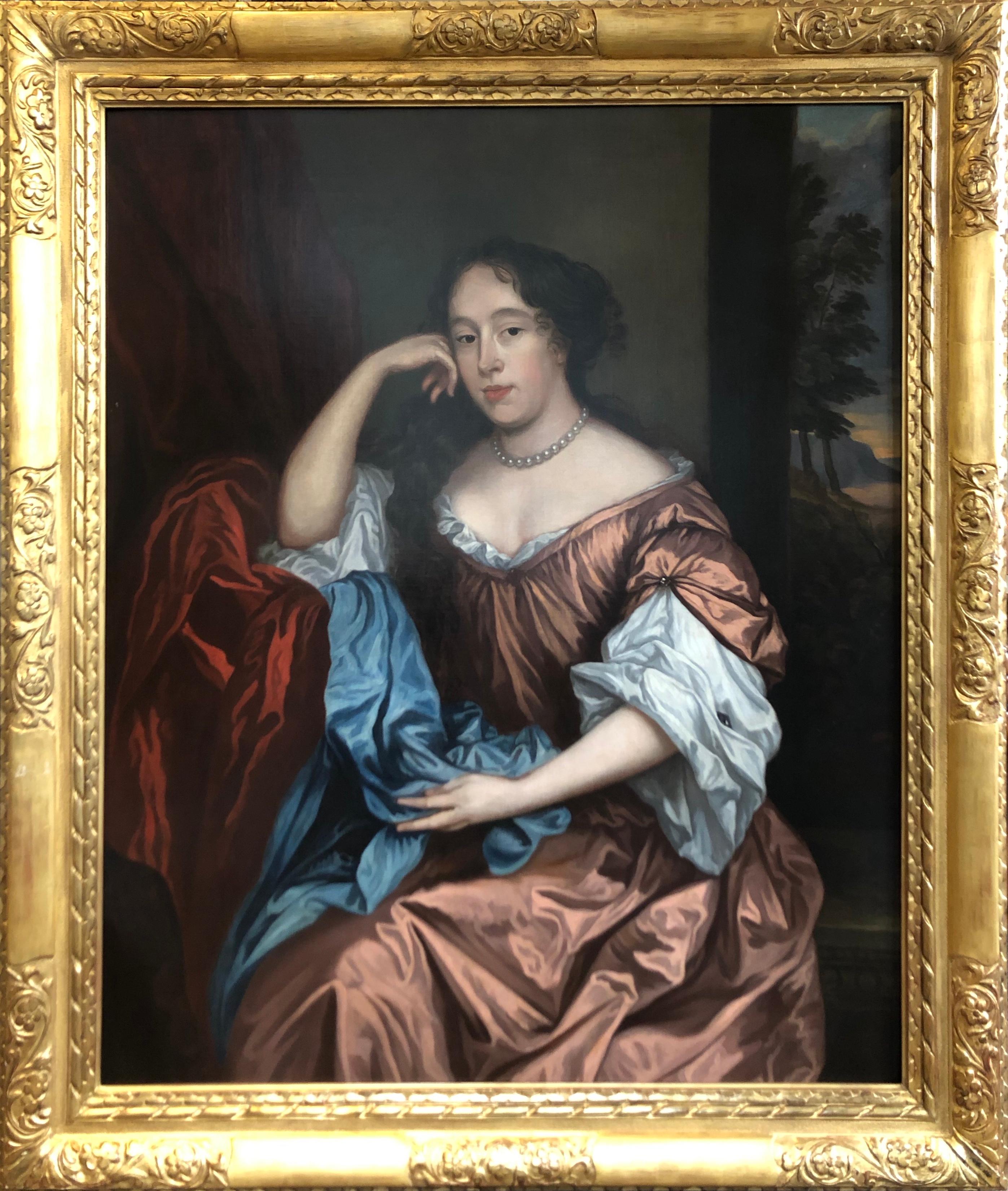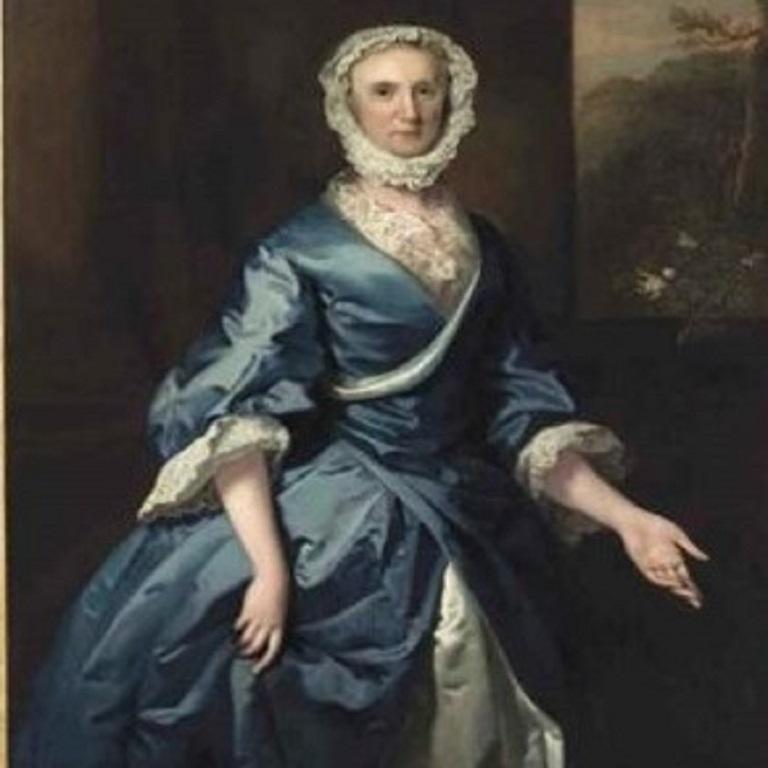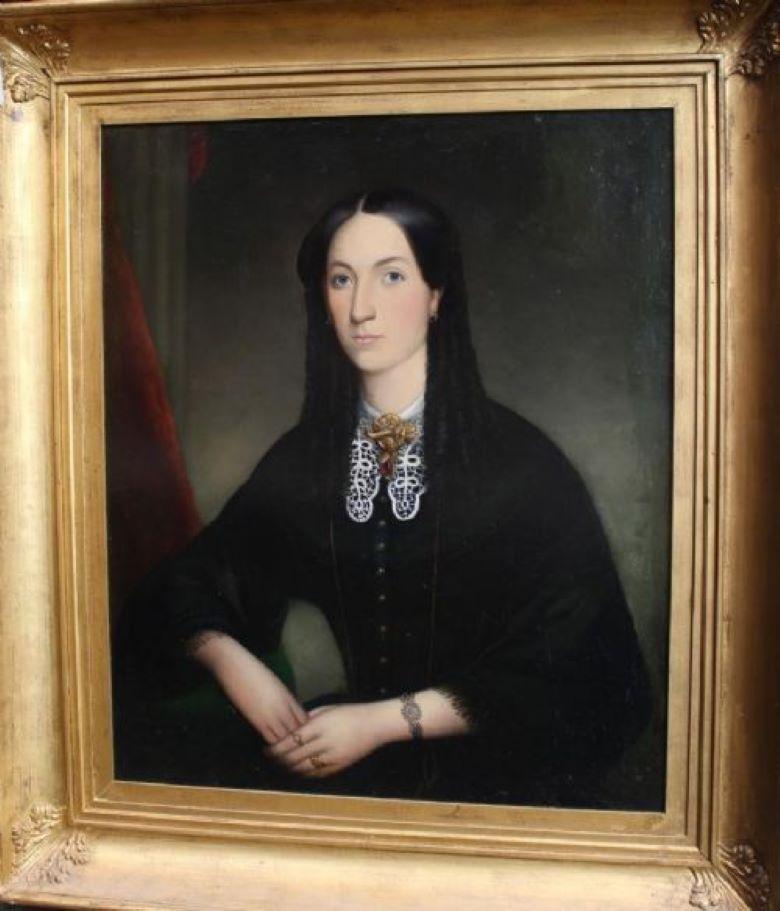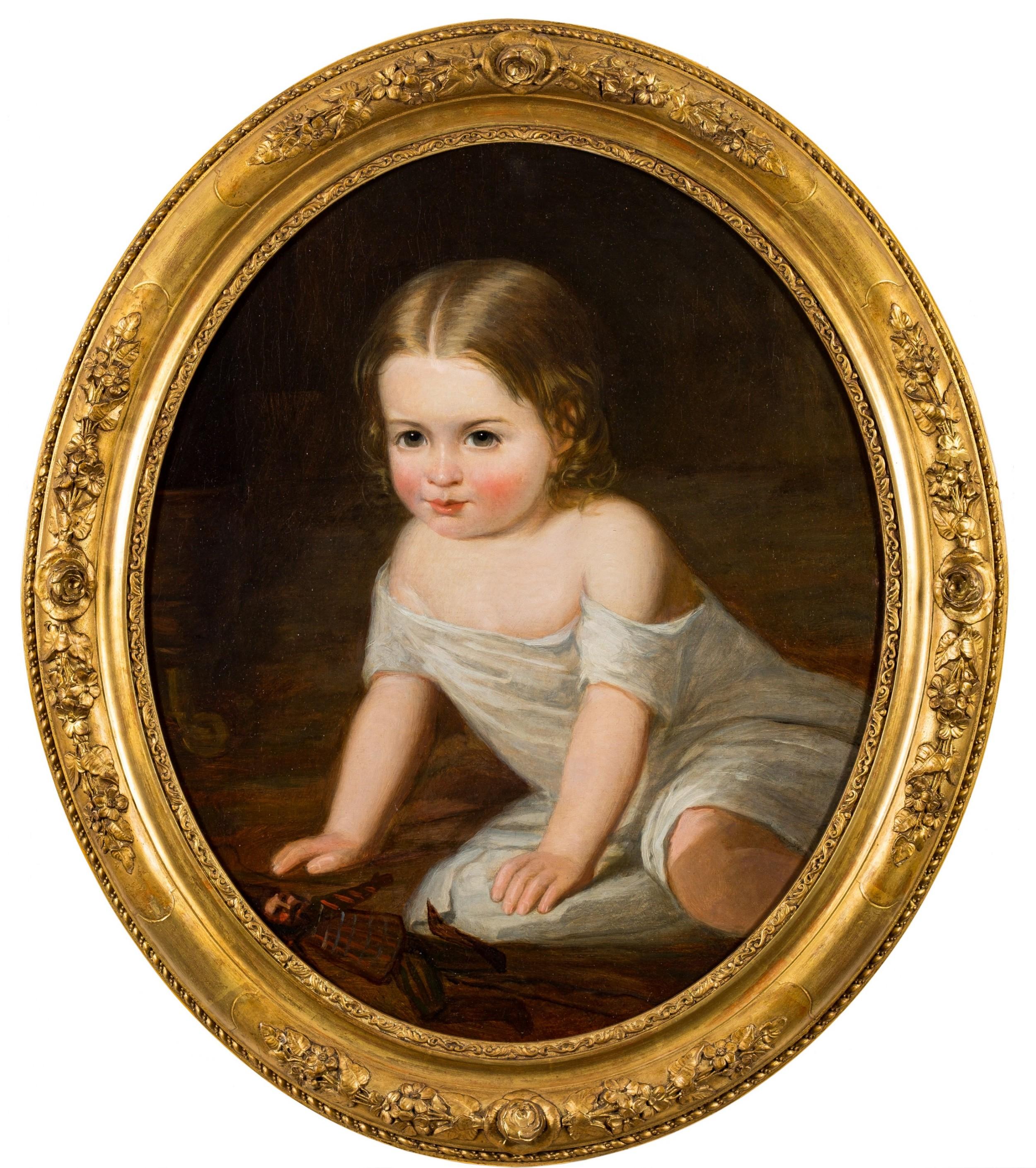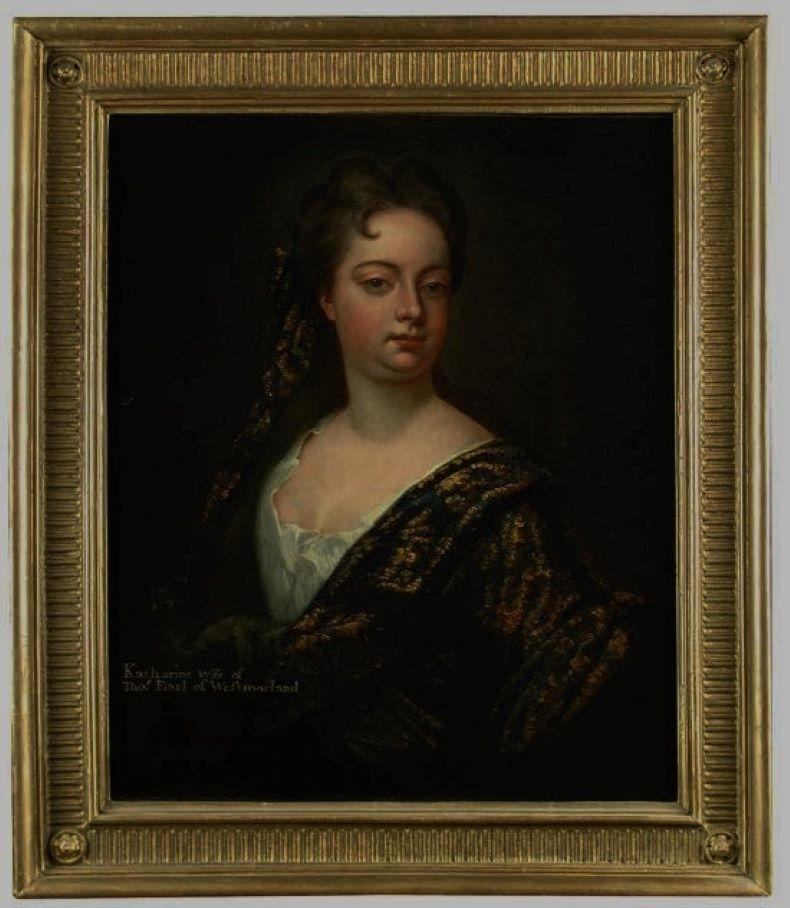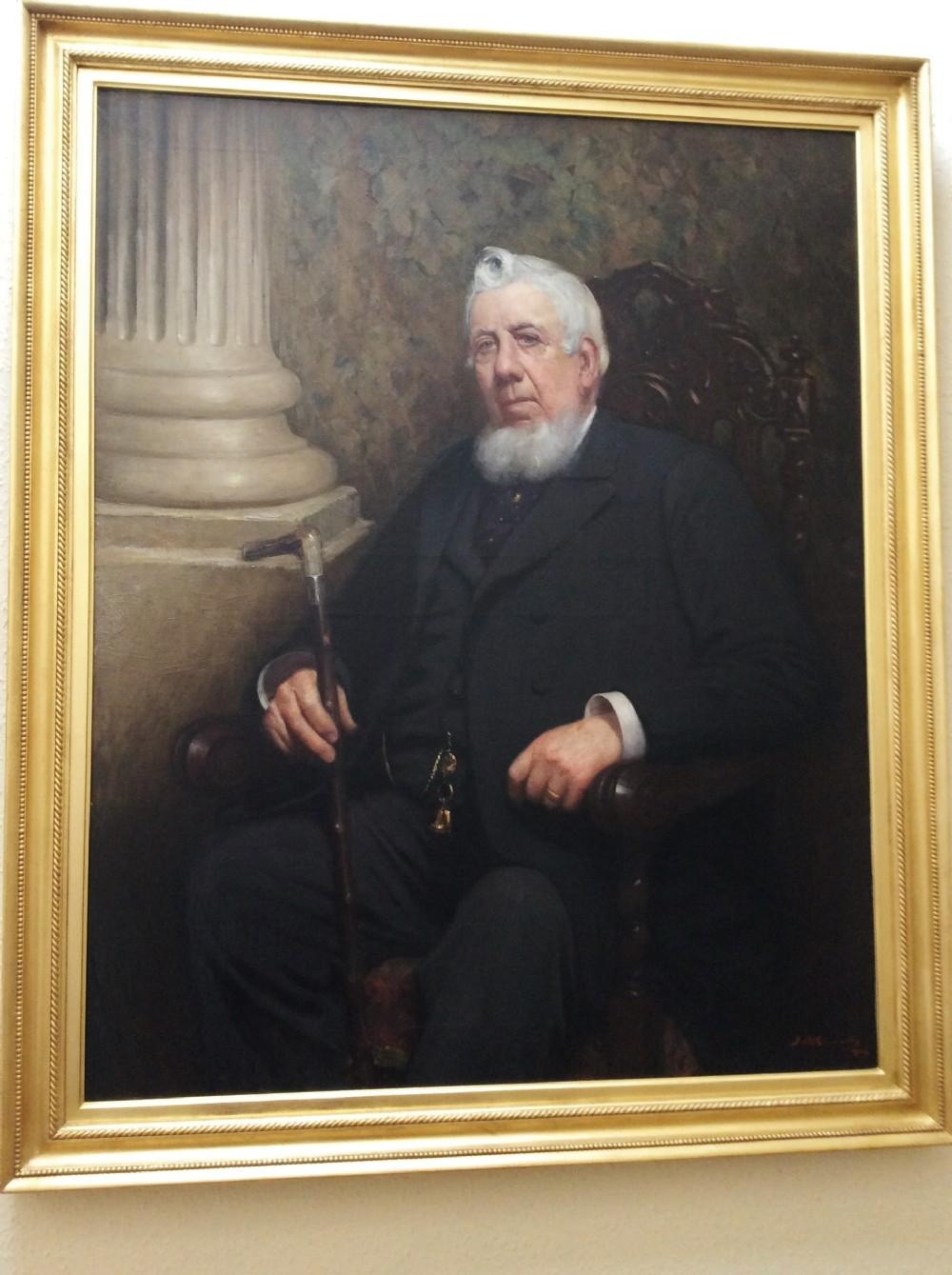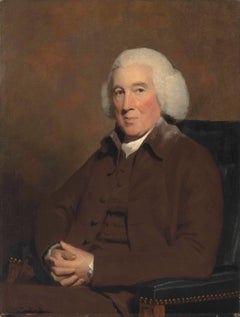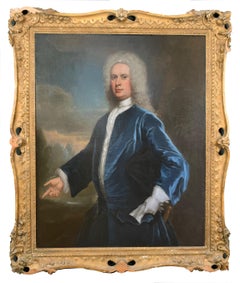
A large 16th C. oil on panel of Madeleine de Valois, Queen of Scots (1520-1537)
View Similar Items
Want more images or videos?
Request additional images or videos from the seller
1 of 11
Joos van CleveA large 16th C. oil on panel of Madeleine de Valois, Queen of Scots (1520-1537)circa 1535
circa 1535
About the Item
- Creator:Joos van Cleve (1475 - 1541, Dutch)
- Creation Year:circa 1535
- Dimensions:Height: 42 in (106.68 cm)Width: 30 in (76.2 cm)
- Medium:
- Movement & Style:
- Period:
- Condition:The painting is in good gallery showroom condition. The painting has been recently cleaned and restored by one of London best restorers. The panel has been cradled probably circa 1900.
- Gallery Location:London, GB
- Reference Number:1stDibs: LU67332526741
About the Seller
5.0
Vetted Seller
These experienced sellers undergo a comprehensive evaluation by our team of in-house experts.
Established in 1990
1stDibs seller since 2017
40 sales on 1stDibs
More From This SellerView All
- 18th Century Oil Painting Portrait of Provost John Pitcairn of DundeeBy Sir Henry RaeburnLocated in London, GBThe pendant to the present portrait showing John Pitcairn's wife Jean, née Robertson, is in the Huntington Art Gallery, San Marino. Both works are datable to the 1790s. Pitcairn, who served as Provost of Dundee from 1782-84, a position his father-in-law also held from 1731-32, later sat to Raeburn for another portrait, dated to circa 1820, which is now in the Royal Scottish Academy, Edinburgh Sale of Christie's London: Wednesday, July 9, 2014 [Lot 00212] Old Master & British Paintings Day Sale Sold For 22,500 GBP Premium Provenance By descent from the sitter to his great-grandson, Ronald Andrew Pitcairn of Pitcullo; Christie's, London, 25 June 1904, lot 58 (200 gns. to Wallis). Alexander Reid, Glasgow. With Agnew's, London, where acquired by A.R. Wilson Wood, 7 April 1909; Christie's, London, 26 June 1914, lot 78 (850 gns. to Agnew). Anonymous sale; Christie's, London, 24 November 1972, lot 27 (320 gns.) Private collection, Dublin, Ireland Exhibition Edinburgh, Royal Scottish Academy, 1876, no. 256 Literature W. Armstrong, Sir Henry Raeburn, London, 1901, p. 110. J. Greig, Sir Henry Raeburn, R.A., His life and work with a catalogue of his pictures, London, 1911, p. 55. R. Asleson and S.M. Bennett, British Paintings at The Huntington, New Haven and London, 2001, p. 312, fig. 12 Sir Henry Raeburn FRSE RA RSA (4 March 1756 – 8 July 1823) was a Scottish portrait painter and Scotland's first significant portrait painter since the Union to remain based in Scotland. He served as Portrait Painter to King George IV in Scotland. Raeburn was born the son of a manufacturer in Stockbridge, on the Water of Leith: a former village now within the city of Edinburgh. He had an older brother, born in 1744, called William Raeburn. His ancestors were believed to have been soldiers, and may have taken the name "Raeburn" from a hill farm in Annandale, held by Sir Walter Scott's family. Orphaned, he was supported by William and placed in Heriot's Hospital, where he received an education. At the age of fifteen he was apprenticed to the goldsmith James Gilliland of Edinburgh, and various pieces of jewellery, mourning rings and the like, adorned with minute drawings on ivory by his hand, still exist. Soon he took to the production of carefully finished portrait miniatures; meeting with success and patronage, he extended his practice to oil painting, at which he was self-taught. Gilliland watched the progress of his pupil with interest, and introduced him to David Martin, who had been the favourite assistant of Allan Ramsay the Latter, and was now the leading portrait painter in Edinburgh. Raeburn was especially aided by the loan of portraits to copy. Soon he had gained sufficient skill to make him decide to devote himself exclusively to painting. George Chalmers (1776; Dunfermline Town Hall) is his earliest known portrait. In his early twenties, Raeburn was asked to paint the portrait of a young lady he had noticed when he was sketching from nature in the fields. Ann was the daughter of Peter Edgar of Bridgelands, and widow of Count James Leslie of Deanhaugh. Fascinated by the handsome and intellectual young artist, she became his wife within a month, bringing him an ample fortune. The acquisition of wealth did not affect his enthusiasm or his industry, but spurred him on to acquire a thorough knowledge of his craft. It was usual for artists to visit Italy, and Raeburn set off with his wife. In London he was kindly received by Sir Joshua Reynolds, the president of the Royal Academy, who advised him on what to study in Rome, especially recommending the works of Michelangelo, and gave Raeburn letters of introduction for Italy. In Rome he met his fellow Scot Gavin Hamilton, Pompeo Girolamo Batoni and Byers, an antique dealer whose advice proved particularly useful, especially the recommendation that "he should never copy an object from memory, but, from the principal figure to the minutest accessory, have it placed before him." After two years of study in Italy he returned to Edinburgh in 1787, and began a successful career as a portrait painter. In that year he executed a seated portrait of the second Lord President Dundas. Examples of his earlier portraiture include a bust of Mrs Johnstone of Baldovie and a three-quarter-length of Dr James Hutton...Category
18th Century Old Masters Figurative Paintings
MaterialsOil
- 17th Century Oil Painting Portrait of a Young English BoyBy Gerard SoestLocated in London, GBGerard SOEST (1600 - 1681) Portrait of a Young Boy oil on canvas 35.5 x 30.5 inches inc. frame Gerard Soest (circa 1600 – 11 February 1681), also known as Gerald Soest, was a portra...Category
17th Century Old Masters Portrait Paintings
MaterialsOil
- 18th Century Oil Painting Portrait of Phillip, 6th Viscount Wenman.By Nathaniel Dance-HollandLocated in London, GBSir Nathaniel Dance-Holland (1750-1811) was an English portrait painter and one of the founding members of the Royal Academy in 1768. Justly celebrated in his lifetime he won several...Category
Late 18th Century Old Masters Portrait Paintings
MaterialsOil
- 18th C. Portrait of the 4th Earl of Sandwich a View of Constantinople BeyondLocated in London, GBJohn Montagu, 4th Earl of Sandwich (13 November 1718 – 30 April 1792) Attributed to George Knapton (1698-1778) Dressed in the Turkish manner, stand...Category
18th Century Old Masters Figurative Paintings
MaterialsOil
- Lady Dormore - A 16th Century Portrait of a key member of Shakespeare's EnglandLocated in London, GBLady Dormer, Mary Browne c. 1592 oil on panel 35 x 29 inches, unframed; 41 x 34.75 inches, inc. frame Inscribed 'Lady Dormore' Mary married Henry Wriothesley, 2nd Earl of Southampton who gave birth to Henry Wriothesley, 3rd Earl of Southampton - one of the great figures in Shakespears"s circle and founder of the Virginia company, developers of Virginia USA. Henry Wriothesley, born 6 October 1573 at Cowdray House, Sussex, was the only son of Henry Wriothesley, 2nd Earl of Southampton, by Mary Browne, the only daughter of Anthony Browne, 1st Viscount Montague, and his first wife, Jane Radcliffe.[5] He had two sisters, Jane, who died before 1573, and Mary (c. 1567 – 1607), who in June 1585 married Thomas Arundell, 1st Baron Arundell of Wardour.[6] After his father's death, Southampton's mother married firstly, on 2 May 1595, as his second wife, Sir Thomas Heneage (d. 17 October 1595), Vice-Chamberlain of the Household, and secondly, between 5 November 1598 and 31 January 1599, Sir William Hervey. She died in November 1607.[7] Early life When his father died on 4 October 1581 Southampton inherited the earldom and landed income valued at £1097 6s per annum. His wardship and marriage were sold by the Queen to her kinsman, Charles, Lord Howard of Effingham, for £1000. According to Akrigg, Howard then "entered into some further agreement, of which no documentation can now be found, which transferred to Lord Burghley personally the custody and marriage of the young Earl, but left Howard holding his lands", and late in 1581 or early in 1582 Southampton, then eight years of age, came to live at Cecil House in the Strand.[8] In October 1585, at age twelve, Southampton entered St John's College, Cambridge,[9] graduating M.A. on 6 June 1589.[10] His name was entered at the Gray's Inn legal society before he left the university, and he was admitted on 29 February 1588.[11] On Southampton's 16th birthday, 6 October 1589, Lord Burghley noted Southampton's age in his diary, and by 1590 Burghley was negotiating with Southampton's grandfather, Anthony Browne, 1st Viscount Montague, and Southampton's mother, Mary, for a marriage between Southampton and Lord Burghley's eldest granddaughter, Elizabeth Vere, daughter of Burghley's daughter, Anne Cecil, and Edward de Vere...Category
16th Century Old Masters Figurative Paintings
MaterialsOil
- Stunning 17th Century Oil Painting - Study of a Head of a ManBy Anthony van DyckLocated in London, GBStudio of Sir Anthony Van Dyck (1599-1641, Flemish) Study of a Head of Man Circa 1627-32, Van Dyck’s second Antwerp period Oil on paper, laid down on canvas Dimensions 15 x 14 inches...Category
17th Century Old Masters Portrait Paintings
MaterialsOil
You May Also Like
- Portrait of a Lady, After Sir Peter Lely (1610-1680) Oil PaintingBy After Sir Peter LelyLocated in Uppingham, GBOil Painting After Sir Peter Lely (1610-1680) Portrait of a Lady Housed in a Lely gold Leaf Frame. Peter Lely: In 1647 he became a member of the Pain...Category
17th Century Old Masters Portrait Paintings
MaterialsOil
- Oil Painting Portrait, attributed to John Vanderbank (1694-1739)By John VanderbankLocated in Uppingham, GBOil Painting Portrait of John Campbell, 4th Duke of Argyll,, att to John Vanderbank (1694-1739) Housed in a swept frame which has been restored after photo. Canvas Size 50" x 40", Fr...Category
1690s Old Masters Portrait Paintings
MaterialsCanvas, Oil
- 19th century portrait painted in St Petersburg in 1819Located in London, GBSigned, inscribed and dated, lower right: 'Geo Dawe RA St Petersburgh 1819', also signed with initials, lower centre: 'G D RA'; and signed and inscribed verso: 'Geo Dawe RA Pinxit 1819 St Petersburgh'; Also inscribed on the stretcher by Cornelius Varley with varnishing instructions. Collections: Private collection, UK, 2010 Literature: Galina Andreeva Geniuses of War, Weal and Beauty: George Dawe...Category
19th Century Old Masters Portrait Paintings
MaterialsCanvas, Oil
- Portrait of Jean-Baptiste Greuze, painted on linen by his daughter Anna GreuzeLocated in PARIS, FRThis replica of the last self-portrait of Jean-Baptiste Greuze painted in 1804, executed by his daughter Anna at her father's side and recently rediscovered, provides us with a poignant image of the great artist, represented with panache despite the disillusions of life. 1. Jean-Baptiste Greuze Jean-Baptiste Greuze was the sixth child of a roofer from Tournus and retained a certain rusticity in his behaviour from his provincial childhood, beyond his taste for describing picturesque scenes of the countryside. He initially started training with a little-known painter from Lyon, Charles Grandon, before his genius was recognised in Paris where he became a full-time student of the Académie (of Painting) in 1755. He exhibited his work for the first time at the Salon during the summer of 1755, before leaving on a trip to Italy in the company of Louis Gougenot, abbot of Chezal-Benoît. Upon his return to Paris, Greuze became a prolific painter, participating widely in the Salons held between 1759 and 1765, to which he sent no less than 63 paintings: numerous genre scenes (The Marriage Contract, The Beloved Mother), but also portraits of his family circle, of courtiers and art lovers, or of his colleagues. The Academy closed the doors of the Salons to him in 1767 for not having produced his reception piece within six months of his reception, as was the tradition. He worked actively on this painting (Emperor Severus rebukes Caracalla, his son, for trying to assassinate him ) until the summer of 1769, tackling historical and mythological subjects for the first time. Once this was completed, he was then fully admitted to the Academy, but as a genre painter, and not as an historical painter, which had been one of the greatest humiliations of his life. Greuze then refused any participation in events organised by the Academy or its successor, the Academy of Fine Arts until 1800. Abandoning history painting, he gave a new twist to genre scenes, bringing them closer to history painting, as in this pair of canvases which constitutes some of his masterpieces: The Paternal Curse: The Ungrateful Son and The Paternal Curse: The Punished Son . Married in 1759 to Anne-Gabrielle Babuti, the daughter of a Parisian bookseller, his marriage was unhappy and his wife probably frequently unfaithful. The institution of divorce enabled him to record their separation in 1793, keeping his two daughters Anna-Geneviève, born in April 1762, and Louise-Gabrielle, born in May 1764, with him. Little is known about his daughter Anna except that she was herself a painter and lived with her father until his death. It is likely that most of the paintings she produced up to that date were attributed to her father, whose technique she shared to a great extent, making it extremely difficult to establish an autonomous corpus of her paintings. Greuze died in his studio at the Louvre on March 21st 1805. The attention paid to the expressivity of his characters and the emotional charge they convey enabled Jean-Baptiste Greuze to enjoy immense popularity with the eighteenth-century public, and they still constitute Greuze's true modernity. As the artist said, "I dipped my brush in my heart". Greuze was also an exceptional draughtsman and a portraitist of immense talent and exceptional longevity who painted both the Dauphin (the son of Louis XV and father to Louis XVI) and the young Napoleon Bonaparte. 2. Greuze's self-portraits Greuze was very much influenced by Dutch paintings during all his life. While the source of his inspiration for genre scenes can be found in Gerard Dou...Category
Early 1800s Old Masters Portrait Paintings
MaterialsLinen, Oil
- William Wissing (follower) 19th Century Portrait Queen Mary IILocated in York, GBA 19th century oil on canvas, portrait of a young woman.This portrait is believed to be of Queen Mary II taken from an engraving of the painting, Halswell Park Sale, 1948, lot no.1323, Housed in a decorative gilt frame.Size overall being 70 x 86 cm high (27.5 x 33¾ inches approx) size of painting 54 x 68 cm (21 x 26 inches approx) To the rear of the portrait is a newspaper cutting of the engraving ,also a typed note regarding the provenance of the painting (see photo) Condition overall is very good, the Canvas has been relined, under UV there are areas of overpaint to bosom.Frame overall very good some minor self coloured losses Mary II (30 April 1662 – 28 December 1694) Mary, born at St James's Palace in London on 30 April 1662,eldest daughter of James, Duke of York (the future James II & VII) , and his first wife, Anne Hyde. Mary's uncle was King Charles II, her maternal grandfather, Edward Hyde, 1st Earl of Clarendon, served for a lengthy period as Charles's chief adviser. Mary married William of Orange. Willem Wissing, known in England as William Wissing...Category
19th Century Old Masters Portrait Paintings
MaterialsOil
- 17th/18th century Portrait studio Godfrey Kneller of George GranvilleLocated in York, GBA fine oval portrait of George Granville, PC, 1st Baron Lansdowne and "Duke of Albemarle" in the Jacobite peerage (1666-1735) Studio of Sir Godfrey ...Category
18th Century Old Masters Portrait Paintings
MaterialsOil
$8,644 Sale Price20% OffFree Shipping
Recently Viewed
View AllMore Ways To Browse
Contemporary Large Wall Hangings
Queen Painted French Beds
Antique Princess Cut
King French Painted Frame Bed
Dior Taffeta
Queen Of Scots
Provence Cloth
Antique French Country Bed
Pair Of Gold Framed French Paintings
Antique Black Velvet Paintings
Mary Of Scots
Knit Wall
Eleanor Of Antique
Mary Queen Of Scots
Mary Queen Scots
Childrens Antique Beds
Set Of Six Series 7
Coat Of Arms Velvet
